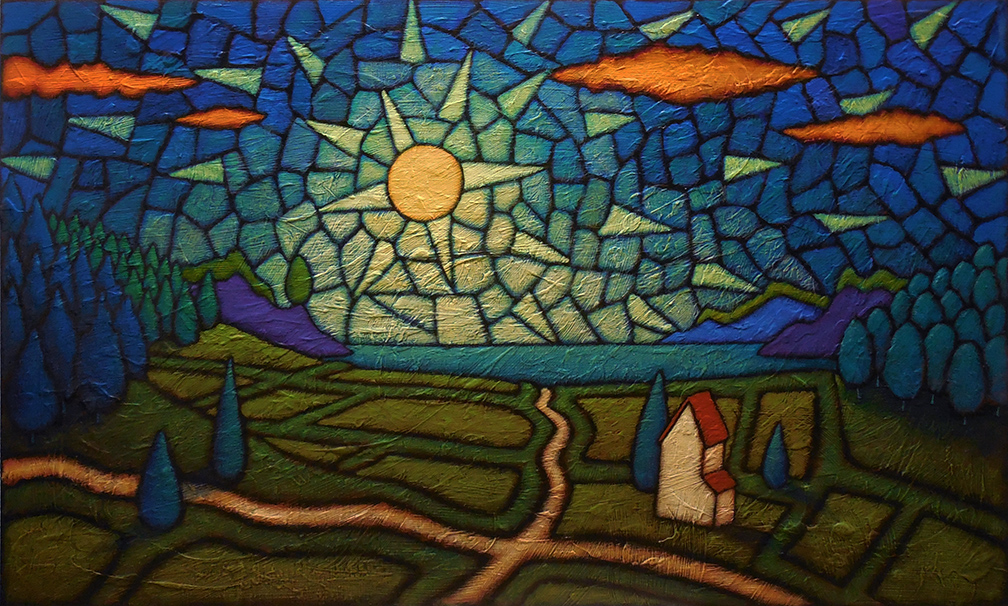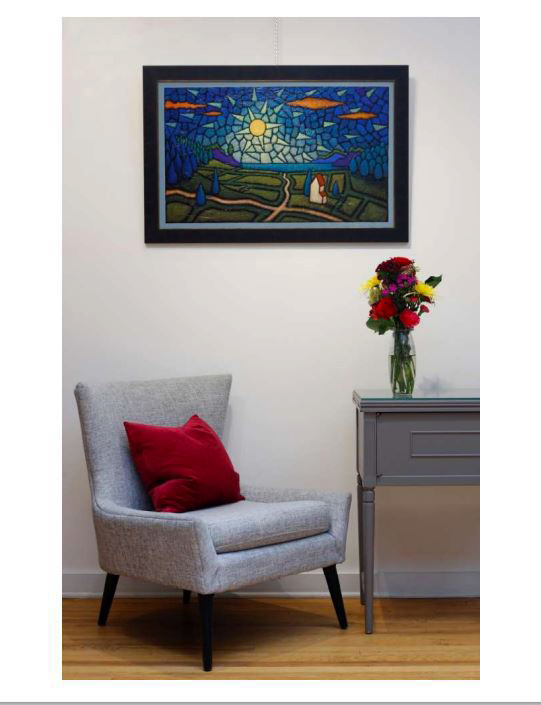
Ralph Fasanella- Bread and Roses
This past week was the beginning of May and May Day, the first day of the month which is a holiday of several stripes, from a pagan celebration of the coming of summer to one that celebrates the rights of workers around the world. For me, it always reminds me of the late folk artist Ralph Fasanella. Before becoming a painter, he was a union organizer throughout his life and it is represented in much of his work. The painting at the top, Bread and Roses, for example, depicts the long and often violent 1912 labor strike against the textile mills in Lawrence, Massachusetts. The striker was called the Bread and Roses strike because the strikers demanded both better pay and benefits– the bread– as well as respect and recognition– the roses.
But when I think of Fasanella, beyond his labor and baseball paintings, I am also always reminded of a story about his response to a suggestion from someone about this painting. I have talked about it in posts here before but thought it would be a good story to share once more.
Anyone who does anything that people look at, listen to or read is always susceptible to a host of well-meaning folks who want to share ideas on how whatever it is that you do can be done better. It usually starts with some simple phrase: What you really need to do is… Or it could be You should really try to…
I generally listen politely and say something like I’ll look into that or Maybe I will try that sometime. Some of the suggestions are quite good and if I were so inclined might well be something I would do. But that is the key thing here: if I were so inclined.
If it’s not something that I want to do with great energy or excitement, if it’s not something that fits in with how I work and see things, then it ain’t getting done.
Another suggestion is that the artist or author should try to do something like other artists. That always hits a sour spot with me. It usually starts with Your work reminds me so much of… or Have you tried painting like….
I know when I was starting that a goal was to not have my work constantly compared to others so when I talk with young artists I try not to tell them that their work reminds me of another artist. There are exceptions to this, say when an artist is very new to the process and needs the affirmation that they are capturing something in the same way as a well known artist. But unless I know what the artist is trying to do and say with their work, it’s not my place to tell then how they should change their work or how it reminds me of other artists.
That brings me back to my Fasanella story. I am replaying a bit from when I first posted it here ten years ago. The portion with the Fasanella story is from a blog post from the Fenimore Art Museum which has a great folk art collection and whose president, Paul D’Ambrosio, was a friend and chronicler of Fasanella’s work and life.
Here’s that post from 2011:
Over the years, I have been approached by several people who think they are doing me a great service by telling me that I should change the way I paint in some way or that I should try to paint more like some other artist. Early on, when I was first exhibiting my work, I had another more established artist tell me that I should change the way I paint my figures, that they should look the way other artists paint them. I responded to this artist and the others who offered me their advice with a smile and an “I’ll look into that.”
But that one time, I also mistakenly heeded the older painter’s words, being inexperienced and seeking a way as I was, and stopped painting figures for a while before realizing that this was not good advice at all. My style, after all, was my own and didn’t need to conform to what others thought were rules.
Here’s the post about Fasanella and his response to such advice.
Ralph Fasanella had trouble painting hands. A lot of trained artists do too, so it is not surprising that a union organizer who turned to drawing suddenly at the age of 40 would struggle with hands early in his career. But he did have something that proved better than years of formal training: he believed that he was an artist and that what he was doing – painting the lives of working people – was a calling that deserved his complete attention and all-consuming passion.
And that made him react when anyone suggested that his paintings weren’t up to snuff. He said that he was painting “felt space,” not real space. His people and the urban settings he placed them in were not realistic in the purest sense of the word, but they sang with spirit and emotion. As Ralph said, “I may paint flat, but I don’t think flat.”

Rembrandt Hands
His most memorable quote, and the one that says the most about him, occurred very early in his artistic career, when someone told him that his hands looked like sticks. He ought to study Rembrandt’s hands, they said, in order to get it right.
His response is priceless: “Fuck you and Rembrandt! My name is Ralph!”
I may not really adopt Ralph’s approach but you can bet his words will be echoing in my head the next time someone says “You should paint like…”
So, those are some of my thoughts on suggestions. Now I am going back to my work, doing it in the only way I know or can. If you have some suggestions for me, well… I’ll look into it.
Read Full Post »





 And that is what I see in the painting at the top, Crossroads of the World. It is, of course, part of my solo show that opens tomorrow, Friday June 4, at the Principle Gallery in Alexandria, VA.
And that is what I see in the painting at the top, Crossroads of the World. It is, of course, part of my solo show that opens tomorrow, Friday June 4, at the Principle Gallery in Alexandria, VA.




